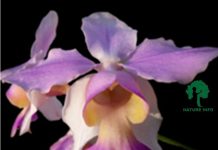Scientific name: Nymphaea nouchali Burm.f.
Family: Nymphaeaceae
Synonym: Nymphaea stellata Willd.
Bengali/Vernacular name: Nil-shapla, Nilkomol, Nilpaddo.
Tribal name: Bibalchak (Garo), Kra pao (Murang), Sapla (Pangkhoa), Kraa-phru-bawn (Rakhaing).
English name: Blue water lily, Blue lotus.
Description of the plant: A long-lived aquatic herb, with rootstock rooting in the mud. Leaves are long-stalked and leathery, floating on the surface of water, ovate to almost circular, prominently toothed, slightly peltate, 12-15 cm across, with the base deeply heart-shaped, and densely hairy beneath. Petioles are long, slender and submerged. Flowers 5-20 cm across; sepal entire, acute, usually green, often marked with darkers dots and lines; petals oblong to oblong-lanceolate, acute, light blue, dull yellowish-white, rose or purplish.

Plant parts used: Flower, root.
Ethnomedicinal uses: Flowers of the plant are used in the traditional system of medicine to treat diabetes.
The roots of the plant are used to treat dysuria, urinary tract infection, and leucorrhoea. Also, used for indigestion, heart diseases, stomachache, and cancer.
Flowers are given for the treatment of gastrointestinal disorders and jaundice.
Powdered root prescribed for piles as demulcent; also for dysentery and dyspepsia.
A paste is made with the flowers of the plant is applied on the affected area for the treatment of burning sensation of the body.
Distribution: The species is commonly found throughout the country in lakes, ponds, and ditches.
Is this plant misidentified? If yes, please tell us….














